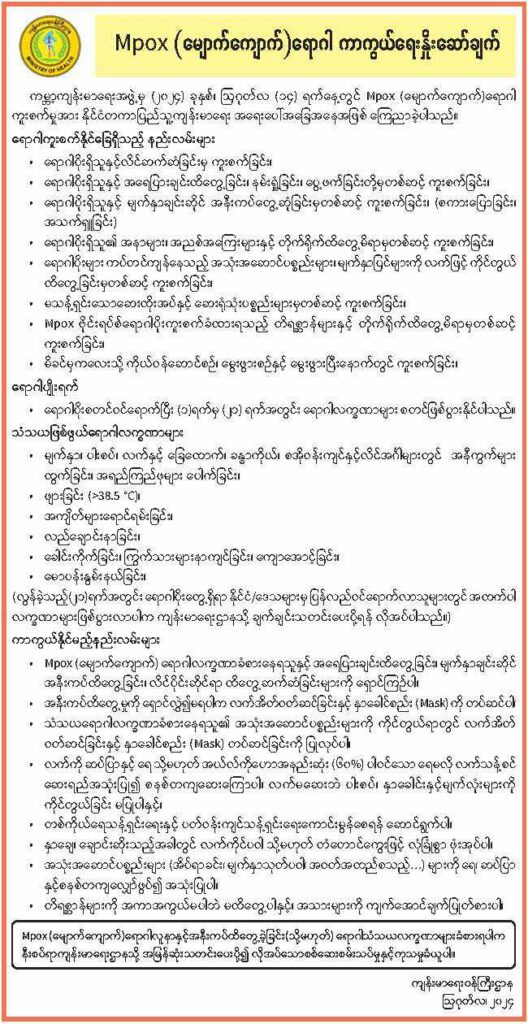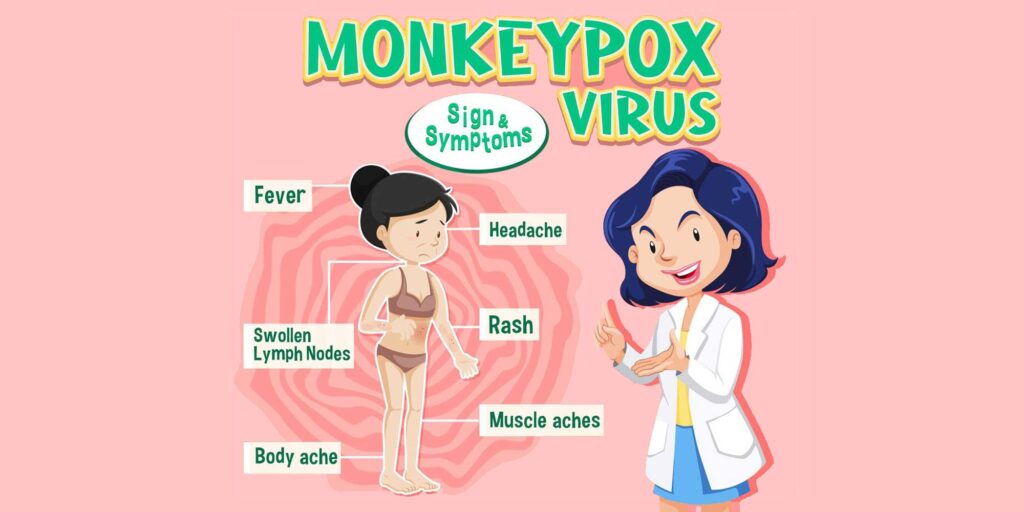Monkeypox Virus Overview
Monkeypox (Mpox) spreads through various ways, including sexual contact, direct skin contact, close face-to-face interaction, and handling infected objects. The main source of transmission is direct contact with an infected animal. Although some older smallpox vaccines can offer partial protection against Mpox, the original smallpox vaccine has been unavailable to the public since 1980, after smallpox was eradicated. As a result, people under the age of 40-50 may not have received this vaccination.
A new smallpox vaccine, known as MVA-BN (Imvamune, Imvanex, or Jynneos), was approved in 2019 to prevent monkeypox infection. However, it is not yet widely distributed globally. The World Health Organization is working with manufacturers to make the vaccine more accessible.
People who have previously received the smallpox vaccine may still have some level of protection against Mpox.
Current Status in Myanmar
To date, there have been no reported cases of Mpox in Myanmar.
Prevention and Control in Myanmar
It is important to recognize the symptoms of Mpox. If someone, particularly a child, develops skin lesions, they should seek medical attention immediately at the nearest health center. Travelers arriving from countries with known outbreaks must undergo fever screening at airports, seaports, and border crossings, and fill out a health declaration form. If there are any concerns, quarantine may be required. Myanmar needs effective infectious disease control centers, like Waibargi Hospital, to manage potential cases. Asymptomatic individuals should submit their health forms to regional offices through local township doctors. It’s essential to monitor and support those in charge of disease prevention and control.


